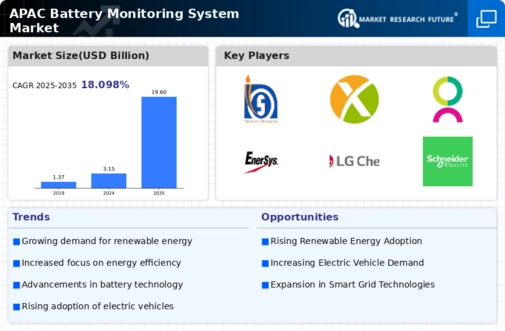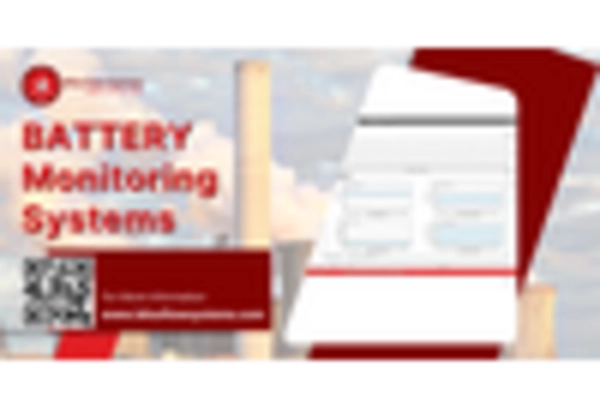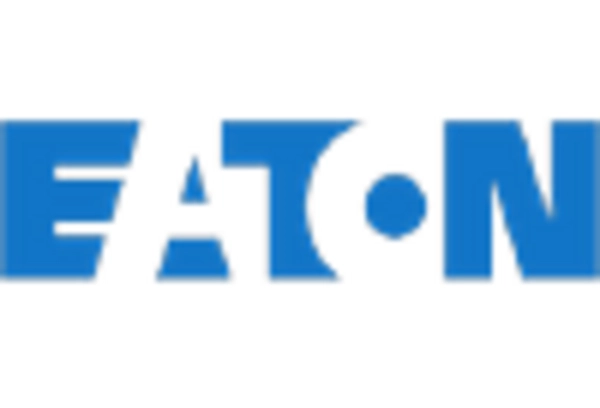China : Unmatched Growth and Innovation
Key markets include major cities like Beijing, Shanghai, and Shenzhen, where technological advancements are concentrated. The competitive landscape features significant players like Nuvation Energy and Schneider Electric, which are investing heavily in R&D. Local dynamics are characterized by a robust supply chain and a growing emphasis on sustainability. Industries such as automotive, telecommunications, and renewable energy are increasingly adopting battery monitoring systems to enhance efficiency and reliability.
India : Rapid Growth in Battery Adoption
Key markets include metropolitan areas like Delhi, Mumbai, and Bengaluru, where the demand for energy-efficient solutions is high. The competitive landscape features players like Eaton Corporation and Texas Instruments, which are expanding their presence in India. The local business environment is becoming increasingly favorable due to supportive regulations and a growing focus on sustainability. Industries such as automotive, telecommunications, and renewable energy are key adopters of battery monitoring systems.
Japan : Innovation and Quality at Forefront
Key markets include Tokyo, Osaka, and Nagoya, where technological innovation is prevalent. Major players like Renesas Electronics and Analog Devices are well-established in the region, contributing to a competitive landscape. The local market dynamics favor high-quality products, and businesses are increasingly adopting battery monitoring systems to enhance performance and safety. Industries such as automotive, electronics, and renewable energy are primary sectors utilizing these systems.
South Korea : Innovative Technologies Driving Growth
Key markets include Seoul and Busan, where technological adoption is rapid. The competitive landscape features significant players like Siemens AG and Eaton Corporation, which are investing in innovative solutions. The local business environment is characterized by a strong emphasis on R&D and collaboration between industry and academia. Sectors such as automotive, energy, and telecommunications are key adopters of battery monitoring systems.
Malaysia : Investment in Renewable Energy Sector
Key markets include Kuala Lumpur and Penang, where the adoption of energy-efficient technologies is on the rise. The competitive landscape features players like Schneider Electric and Texas Instruments, which are expanding their operations in Malaysia. The local market dynamics are favorable due to supportive regulations and a growing focus on sustainability. Industries such as automotive, energy, and telecommunications are increasingly adopting battery monitoring systems.
Thailand : Government Support Fuels Growth
Key markets include Bangkok and Chiang Mai, where the adoption of energy-efficient technologies is gaining momentum. The competitive landscape features players like Coulomb Technologies and Eaton Corporation, which are expanding their presence in Thailand. The local market dynamics are characterized by supportive regulations and a growing focus on sustainability. Industries such as automotive, energy, and telecommunications are key adopters of battery monitoring systems.
Indonesia : Growing Demand for Energy Solutions
Key markets include Jakarta and Surabaya, where the demand for energy-efficient solutions is rising. The competitive landscape features players like Nuvation Energy and Battery Monitoring Systems, which are exploring opportunities in Indonesia. The local business environment is becoming increasingly favorable due to supportive regulations and a growing focus on sustainability. Industries such as automotive, telecommunications, and renewable energy are key adopters of battery monitoring systems.
Rest of APAC : Varied Growth Across Sub-regions
Key markets include major urban centers in countries like Vietnam, the Philippines, and Singapore, where technological adoption is growing. The competitive landscape is diverse, with both local and international players vying for market share. Local dynamics vary significantly, with some countries facing regulatory challenges while others benefit from supportive policies. Industries such as automotive, energy, and telecommunications are key sectors utilizing battery monitoring systems.


















Leave a Comment